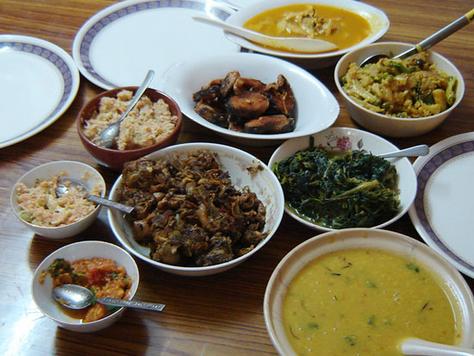Introduction: The Interwoven Cuisines of Nepal and Tibet
Nepal and Tibet are geographically connected and share a long history of cultural exchange. This exchange is also evident in their culinary traditions, as both countries have influenced each other’s cuisine. The Tibetan influence on Nepalese cuisine is significant and has shaped the way Nepalese cuisine is prepared, served, and enjoyed.
Tibetan Influence on Nepalese Cooking Techniques
Tibetan cuisine has a strong influence on Nepalese cooking techniques, specifically in preparing meat dishes. Tibetan meat dishes are often cooked in a steam pot called a “momo” or “dumpling” pot, which is used to cook various types of dishes, including soups, stews, and dumplings. The Nepalese have adopted this technique and have developed it further by incorporating local spices and ingredients to create unique flavors.
Another technique that is commonly used in Nepalese cuisine is the use of firewood as a heat source. This technique is also popular in Tibetan cuisine, and the tradition has been passed down through generations. The use of firewood adds a distinct smoky flavor to the dishes, which is highly appreciated by Nepalese and Tibetan food enthusiasts.
Spices and Ingredients: Commonalities and Differences
Tibetan and Nepalese cuisines share a lot of common spices and ingredients, such as ginger, garlic, turmeric, and cumin. However, there are also several differences between the two. Tibetan cuisine uses a lot of yak meat and dairy products, while Nepalese cuisine uses buffalo meat and goat meat. Additionally, Nepalese cuisine also incorporates a lot of lentils and legumes, which are not commonly used in Tibetan cuisine.
Despite these differences, both cuisines use spices and ingredients in a similar way. They are used to enhance the natural flavor of the dish and to create a balance between the various tastes and textures.
How Tibetan Food Culture Shaped Nepalese Festivals
Tibetan food culture has had a significant impact on Nepalese festivals, such as the Tibetan New Year, which is celebrated as Losar in Nepal. During this festival, traditional Tibetan dishes such as momos and thukpa are prepared and served to celebrate the occasion. These dishes are also served during other festivals in Nepal, such as Dashain and Tihar.
The influence of Tibetan food culture on Nepalese festivals has created a unique culinary tradition that celebrates the diversity and cultural exchange between the two countries.
Tibetan Cuisine’s Influence on Himalayan Restaurant Menus
The influence of Tibetan cuisine on Nepalese cuisine has also expanded to the menus of Himalayan restaurants. Many Nepalese restaurants in the US and other countries have added Tibetan dishes to their menus, such as thukpa and momos. This has not only expanded the culinary options for consumers but has also created a greater awareness of the cultural exchange between Nepal and Tibet.
The Future of Tibetan-Nepalese Culinary Exchange
The future of Tibetan-Nepalese culinary exchange is promising, as both countries continue to share their culinary traditions and techniques. The exchange has not only created a unique and diverse culinary tradition but has also strengthened the cultural ties between the two countries. It is expected that this exchange will continue to grow and evolve, creating new and exciting culinary experiences for food enthusiasts around the world.

